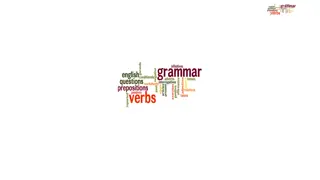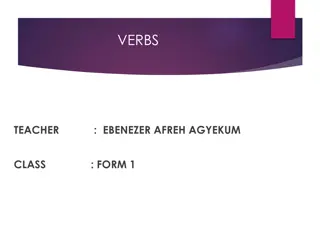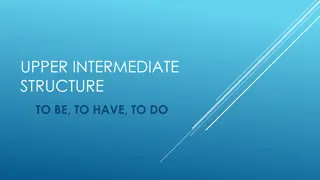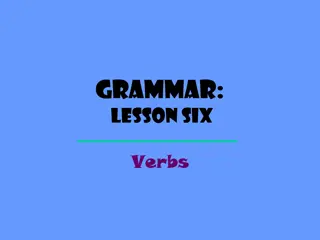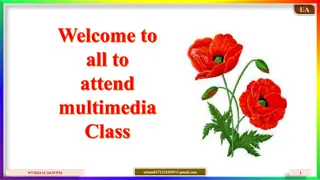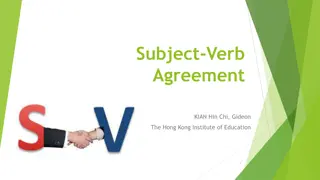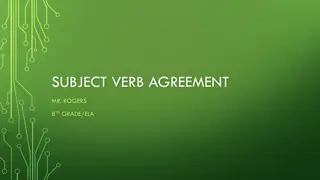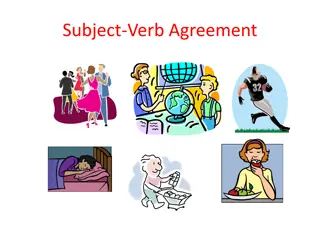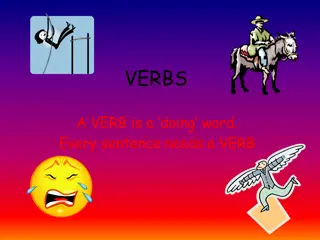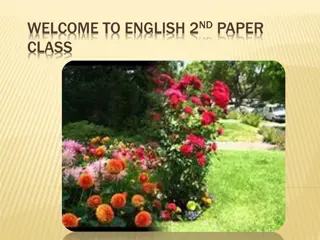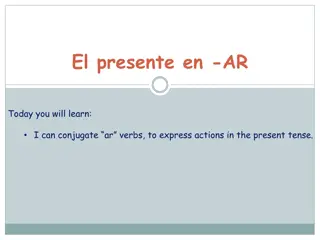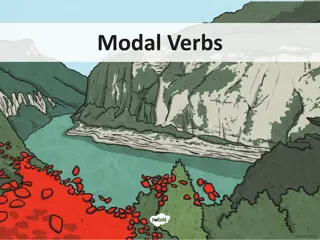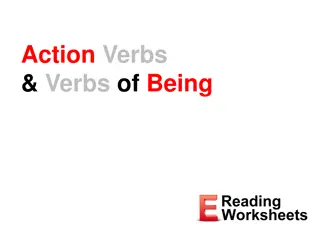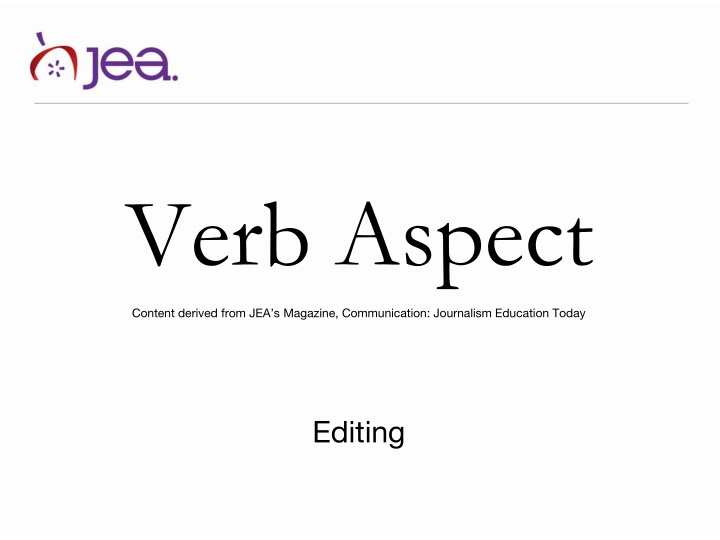
Verb Aspect in Grammar: Simple, Perfect, and Progressive
Explore the concept of verb aspect in grammar, distinguishing between simple, perfect, and progressive aspects. Learn how each aspect defines the temporal flow of actions and events in sentences. Discover examples of simple tenses, perfect aspects, and progressive aspects to enhance your understanding of verb usage.
Download Presentation

Please find below an Image/Link to download the presentation.
The content on the website is provided AS IS for your information and personal use only. It may not be sold, licensed, or shared on other websites without obtaining consent from the author. If you encounter any issues during the download, it is possible that the publisher has removed the file from their server.
You are allowed to download the files provided on this website for personal or commercial use, subject to the condition that they are used lawfully. All files are the property of their respective owners.
The content on the website is provided AS IS for your information and personal use only. It may not be sold, licensed, or shared on other websites without obtaining consent from the author.
E N D
Presentation Transcript
Verb Aspect Content derived from JEA s Magazine, Communication: Journalism Education Today Editing
Verb aspect The verb expresses actions, events or states of being about the subject of the sentence. It is the critical element of the predicate of a sentence. Aspect defines the verb s temporal flow, meaning whether the action is complete or continuous.
Verb aspect Aspect refers to the nature of the action described by the verb. There are three aspects: simple, perfect and progressive.
Simple tenses Simple tenses describe an action but do not state whether it is finished. Use when the beginning or ending of an action is unknown or unimportant or when the action is habitual or repeated.
Simple tenses I edited. (simple past) I edit. (simple present) I will edit. (simple future)
Perfect aspects Perfect aspects describe a finished action. Use this when the end of the action is known to emphasize the action is complete in the past, present or future. Use a form of to have in the appropriate tense.
Perfect aspects I had edited. (past perfect) I have edited. (present perfect) I will have edited. (future perfect)
Progressive aspect Progressive aspect describes an ongoing action. Use it when the action is ongoing in the present, past or future. Use an appropriate form of to be.
Progressive aspect I was editing. (past progressive) I am editing. (present progressive) I will be editing (future progressive)
Progressive aspect It is also possible to combine the complete aspects and tenses to describe an action that was in progress and then finished. I had been editing. (past perfect progressive) I have been editing. (present perfect progressive) I will have been editing. (future perfect progressive)
Verb aspect Writers and editors should be conscious of aspect as they evaluate the accuracy of statements. Timeline is always important. Attention to sequence is essential to convey information accurately to readers.
Verb aspect Aspect also makes it easy for readers to understand the connection of completed action and ongoing action. Using aspect correctly makes it easy for readers to understand actions, events and states of being and aids the important goal: fluency. Use words clearly so readers perceptions will be correct.

